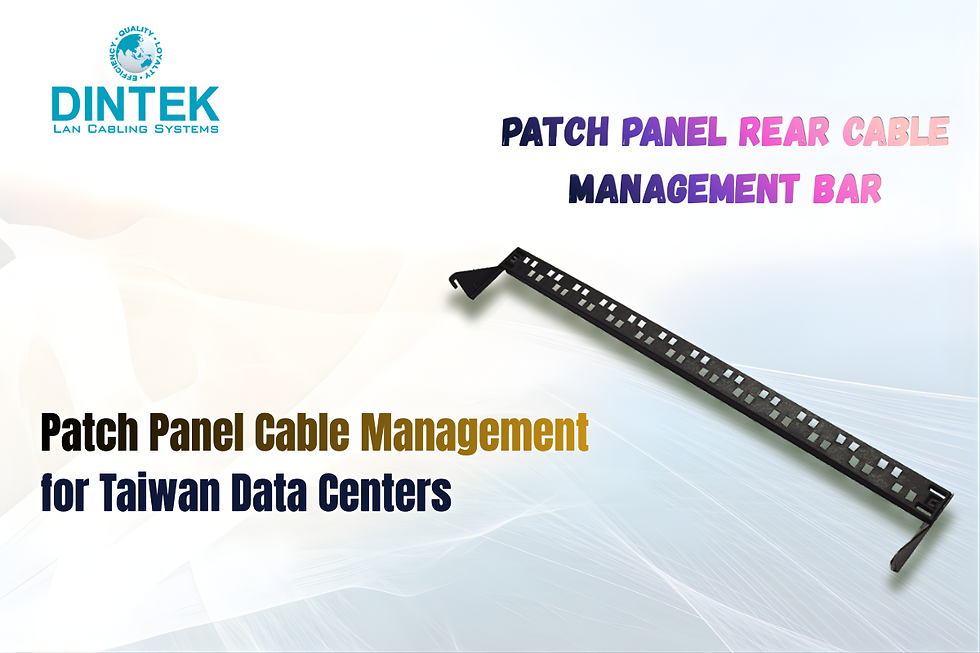A Beginner's Guide to Fiber Optic Connectors
- dinteklancabling
- Jun 25, 2024
- 3 min read
In the world of modern telecommunications, fiber optic technology stands as a cornerstone for high-speed data transmission. Essential to this technology are fiber optic connectors, which play a crucial role in ensuring efficient and reliable data transfer. If you're new to fiber optics, understanding the different types of connectors and their applications is vital. This beginner's guide, brought to you by DINTEK, aims to demystify fiber optic connectors and provide you with the knowledge to make informed decisions.
What are Fiber Optic Connectors?
Fiber optic connectors are critical components that join fiber optic cables together, allowing light signals to pass through with minimal loss. They ensure that the fibers are precisely aligned to enable optimal data transmission. These connectors are used in a wide range of applications, from telecommunications and networking to medical imaging and industrial automation.

Types of Fiber Optic Connectors
There are several types of fiber optic connectors, each designed for specific applications and performance requirements. Here are some of the most common types:
ST (Straight Tip) Connector
The ST connector, one of the oldest types, is widely used in networking environments, particularly in multimode networks. It features a bayonet-style coupling mechanism, which makes it easy to connect and disconnect.
SC (Subscriber Connector)
The SC connector is popular in both single-mode and multimode fiber optic networks. It has a push-pull coupling mechanism, making it easy to install and remove.
LC (Lucent Connector)
LC connectors are typically used in high-density applications because of their small form factors. It features a push-pull mechanism similar to the SC connector but is half the size, allowing for more connections in a given space. The LC connector is highly favored in modern data centers and telecommunications equipment.
FC (Ferrule Connector)
The FC connector is used primarily in single-mode fiber optic networks. It has a threaded coupling mechanism, ensuring a secure and stable connection. FC connectors are known for their robustness and ability to maintain performance in challenging environments.
How to Choose the Right Fiber Optic Connector
Choosing the right fiber optic connector depends on several factors, including the type of network, the required data transmission speed, and the environmental conditions.
Determine the Application: Identify whether the network is for telecommunications, data centers, or industrial use. Different applications may require different connectors.
Consider the Fiber Type: Single-mode fibers require connectors that can handle long-distance transmissions, while multimode fibers are suited for shorter distances.
Evaluate the Connector Type: Choose connectors that offer the best performance for your specific needs. For example, LC connectors are ideal for high-density applications, while ST connectors are suitable for robust networking environments.
Assess Environmental Conditions: In harsh environments, connectors like FC with threaded couplings may offer better performance and durability.
Installation and Maintenance
Proper installation and maintenance are crucial for the optimal performance of fiber optic connectors. Here are some best practices:
Clean Connectors Regularly: Dust and dirt can significantly affect performance. Use appropriate cleaning tools and techniques to keep connectors clean.
Handle with Care: Fiber optic connectors are delicate. To prevent damaging the fibers, handle them gently.
Follow Manufacturer Guidelines: Adhere to the installation and maintenance guidelines provided by the connector manufacturer to ensure longevity and reliability.
Conclusion
Fiber optic connectors are fundamental to the performance and reliability of fiber optic networks. Understanding the different types and their applications will help you choose the right connector for your needs. Whether you're setting up a new network or maintaining an existing one, following best practices for installation and maintenance will ensure that your fiber optic connections remain efficient and dependable. At DINTEK, we are committed to providing high-quality fiber optic solutions that meet the demands of modern telecommunications.



Comments